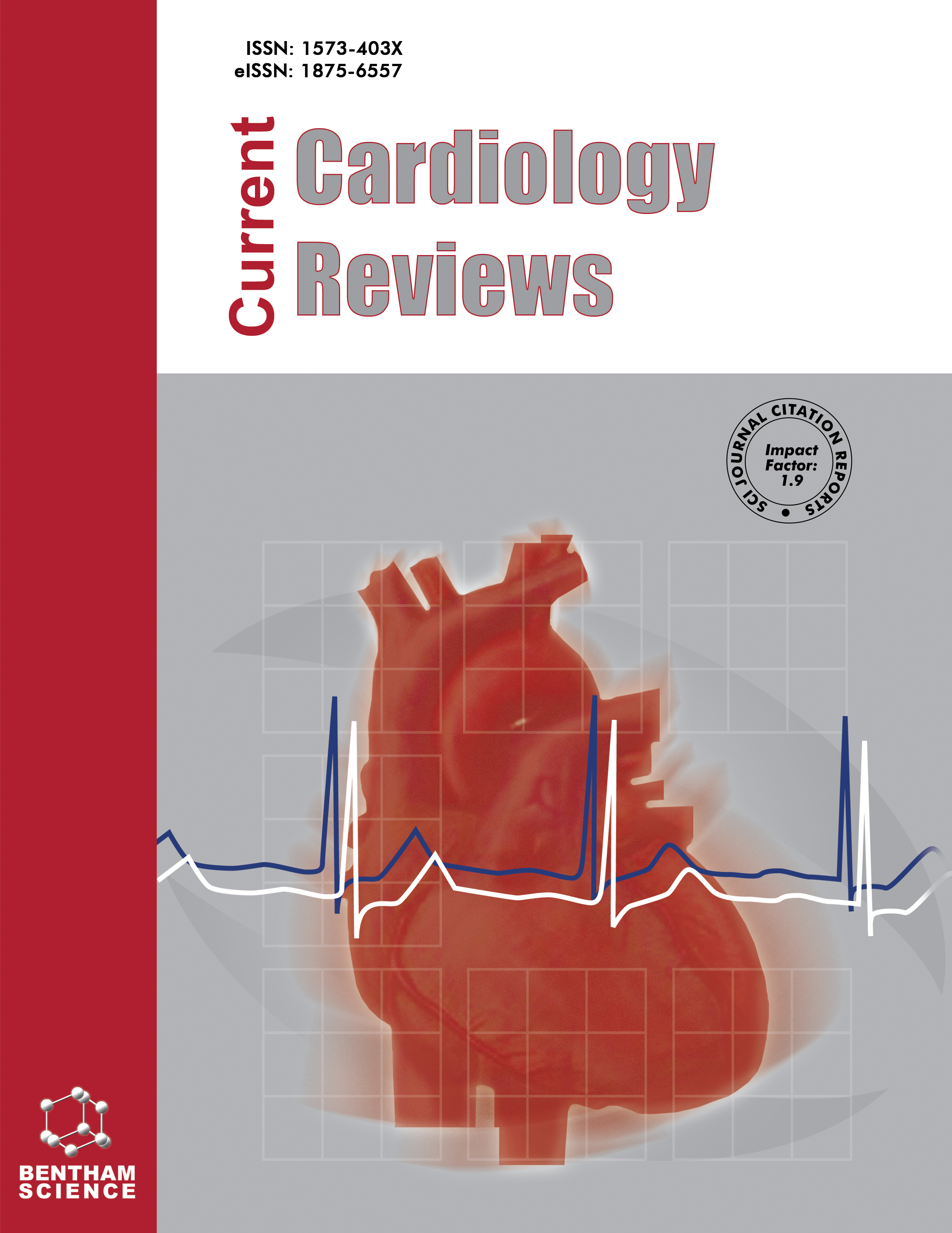- Home
- A-Z Publications
- Current Cardiology Reviews
- Previous Issues
- Volume 15, Issue 3, 2019
Current Cardiology Reviews - Volume 15, Issue 3, 2019
Volume 15, Issue 3, 2019
-
-
Implantable Cardioverter-Defibrillators in Patients with ESRD: Complications, Management, and Literature Review
More LessAuthors: Bayati Mehdi, Hosseini Kaveh and Vasheghani-Farahani AliBackground: Cardiovascular diseases are the leading cause of death among dialysis patients, accounting for about 40% of all their mortalities. Sudden cardiac death (SCD) is culpable for 37.5% of all deaths among patients with end-stage renal disease (ESRD). Implantable cardioverterdefibrillators (ICDs) should be considered in dialysis patients for the primary or secondary prevention of SCD. Recent studies Read More
-
-
-
Clinical Significance of Ductus Venosus Waveform as Generated by Pressure- volume Changes in the Fetal Heart
More LessAuthors: Madalena Braga, Maria Lúcia Moleiro and Luís Guedes-MartinsThe ductus venosus is a vascular shunt situated within the fetal liver parenchyma, connecting the umbilical vein to the inferior vena cava. This vessel acts as a bypass of the liver microcirculation and plays a critical role in the fetal circulation. The ductus venosus allows oxygenated and nutrient-rich venous blood to flow from the placenta to the myocardium and brain. Increased impedance to flow in the fetal ductus veno Read More
-
-
-
Trigger, Signaling Mechanism and End Effector of Cardioprotective Effect of Remote Postconditioning of Heart
More LessThe hypothetical trigger of remote postconditioning (RPost) of the heart is the highmolecular weight hydrophobic peptide(s). Nitric oxide and adenosine serve as intermediaries between the peptide and intracellular structures. The role of the autonomic nervous system in RPost requires further study. In signaling mechanism RPost, kinases are involved: protein kinase C, PI3, Akt, JAK. The hypothetical end effector of RPost i Read More
-
-
-
Emergence of Three Dimensional Printed Cardiac Tissue: Opportunities and Challenges in Cardiovascular Diseases
More LessThree-dimensional (3D) printing, also known as additive manufacturing, was developed originally for engineering applications. Since its early advancements, there has been a relentless development in enthusiasm for this innovation in biomedical research. It allows for the fabrication of structures with both complex geometries and heterogeneous material properties. Tissue engineering using 3D bio-printers can overcom Read More
-
-
-
Rate and Predictors of Permanent Pacemaker Implantation After Transcatheter Aortic Valve Implantation: Current Status
More LessTranscather aortic valve implantation (TAVI) has become a safe and indispensable treatment option for patients with severe symptomatic aortic stenosis who are at high surgical risk. Recently, outcomes after TAVI have improved significantly and TAVI has emerged as a qualified alternative to surgical aortic valve replacement in the treatment of intermediate risk patients and greater adoption of this procedure is to be expected Read More
-
-
-
Triple Antithrombotic Therapy vs. Double Antithrombotic Therapy: One Scenario, 8 Questions, Many Conclusions
More LessAuthors: Elio Aloia, Paolo Orselli and Carlotta SciaccalugaIn patients with atrial fibrillation undergoing percutaneous coronary intervention with the placement of stents, a triple antithrombotic therapy is empirically established, which consists of a combination of dual antithrombotic therapy (aspirin plus a P2Y12 inhibitor) and an oral anticoagulant agent. This choice is guided by the desirable result of reducing cerebrovascular and coronary ischemic events. However, there is an un Read More
-
-
-
Multimodalities Imaging of Immunoglobulin 4-related Cardiovascular Disorders
More LessImmunoglobulin 4 (IgG4)-related systemic disease (IgG4-RSD) is a systemic inflammatory disease characterized by elevation of serum IgG4. IgG4-RSD can affect any organ in the body, and the list of organs associated with this condition is growing steadily. IgG4-related cardiovascular disease affects the coronary arteries, heart valves, myocardium, pericardium, aorta, pulmonary and peripheral vessels. Echocardiography is the Read More
-
-
-
Cryoballoon Ablation for the Treatment of Atrial Fibrillation: A Meta-analysis
More LessBackground: Ablation therapy is the treatment of choice in antiarrhythmic drugrefractory atrial fibrillation (AF). It is performed by either cryoballoon ablation (CBA) or radiofrequency ablation. CBA is gaining popularity due to simplicity with similar efficacy and complication rate compared with RFA. In this meta-analysis, we compare the recurrence rate of AF and the complications from CBA versus RFA for the tre Read More
-
Volumes & issues
-
Volume 21 (2025)
-
Volume 20 (2024)
-
Volume 19 (2023)
-
Volume 18 (2022)
-
Volume 17 (2021)
-
Volume 16 (2020)
-
Volume 15 (2019)
-
Volume 14 (2018)
-
Volume 13 (2017)
-
Volume 12 (2016)
-
Volume 11 (2015)
-
Volume 10 (2014)
-
Volume 9 (2013)
-
Volume 8 (2012)
-
Volume 7 (2011)
-
Volume 6 (2010)
-
Volume 5 (2009)
-
Volume 4 (2008)
-
Volume 3 (2007)
-
Volume 2 (2006)
-
Volume 1 (2005)
Most Read This Month
Article
content/journals/ccr
Journal
10
5
false
en


